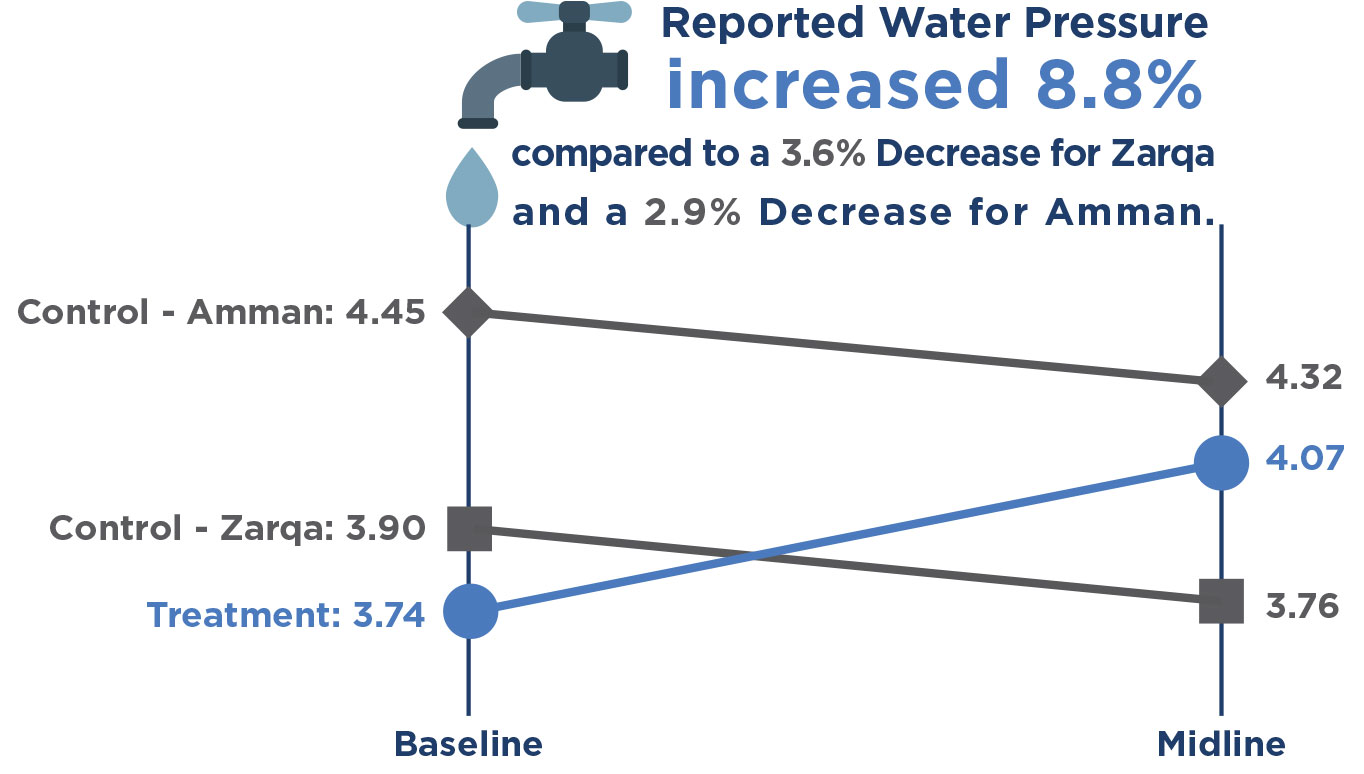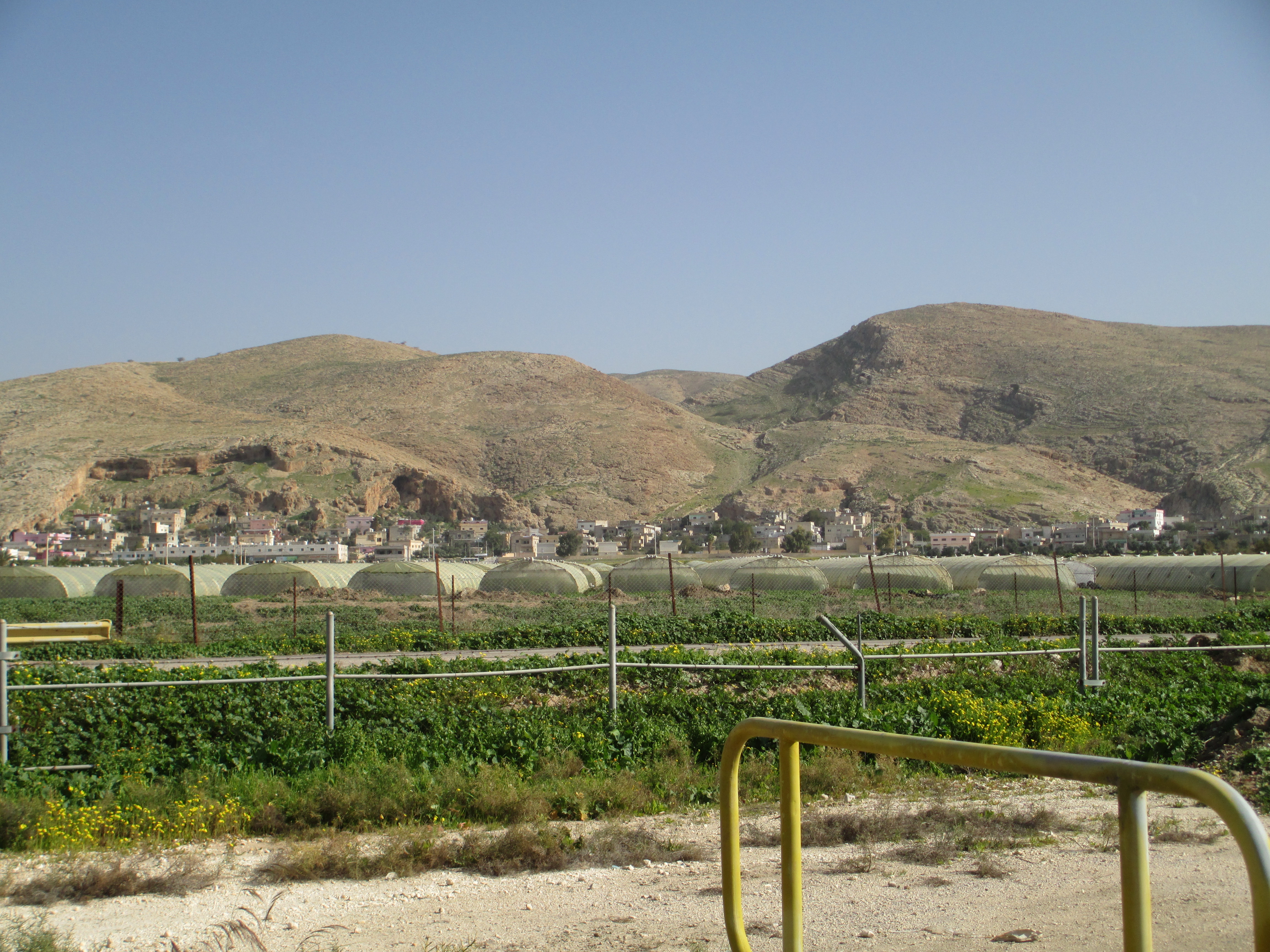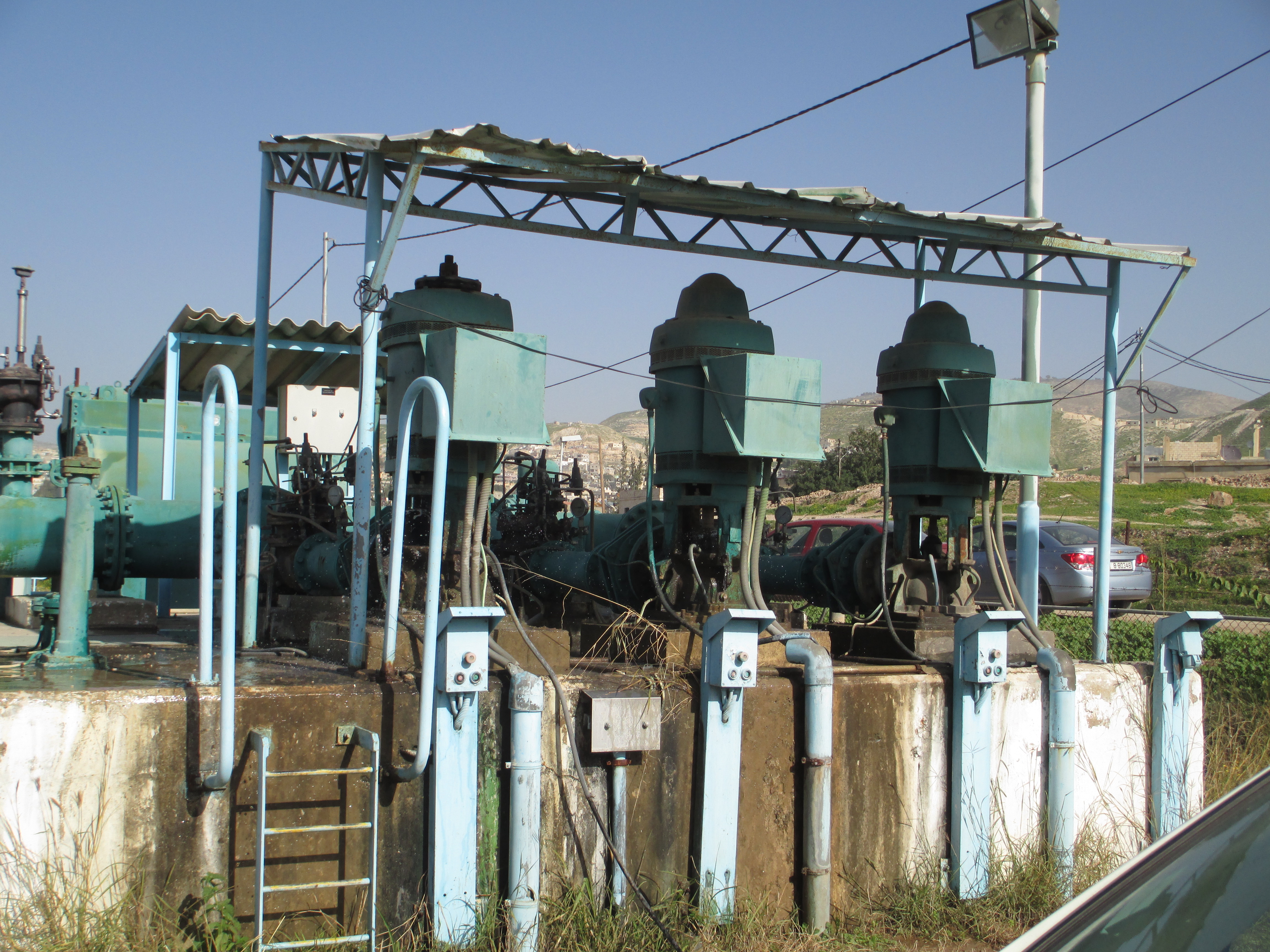Program Overview
MCC's $273 million Jordan Compact (2011-2016) contained three projects: The Water Network Project (WNP), the Wastewater Network Project (WWNP), and the As-Samra Expansion Project (AEP). It aimed to increase the supply of water to households and businesses through improvements in the efficiency of water delivery, the extension of wastewater collection, and the expansion of wastewater treatment. It was expected that these improvements would stimulate economic growth by relaxing constraints related to water scarcity.Key Findings
Wastewater Collection
- Treatment areas show higher sewer connection rates and decreased incidence of sewer back-ups.
- There are no clear increases, yet, to the volume of irrigation with blended water (freshwater + treated wastewater) or decreases to the volume of irrigation with freshwater, changes that will free up water supply for households and businesses.
Water Delivery
- Data quality issues prevented leakage measures from being reported at this interim stage.
- Treatment households received water for more hours per week than control households in Amman, but not more than controls in Zarqa, perhaps because the WNP reduced leakage and increased water supply for all of Zarqa, including the controls.
- Billing data from the water utility indicated that utility water consumption increased among treatment households compared to controls in Zarqa.
- There were no differences in perceptions of water quality by consumers in treatment versus control areas.
- There were no differences in household expenditure on non-network water (for example, bottled water purchased from a shop, which is much more expensive) between treatment and control households.
Evaluation Questions
This interim impact evaluation was designed to answer a sub-set of questions focused on results expected by the end of 2016—when the Compact ended and operations were handed off to the Government of Jordan. As such, the evaluation was focused on measuring changes primarily in service delivery-related indicators, and not in many of the anticipated higher-level outcomes, by answering the following questions:- 1 Are the compact investments resulting in increased irrigation with additional blended water (freshwater + treated wastewater) in the Jordan Valley? Is the volume of irrigation using freshwater correspondingly decreasing?
- 2 Did the WNP change the quantity of water consumed by households in Zarqa (through reduced leaks and increased reliability)?
- 3 Did the WNP affect time and money expenditure on water for consumers in Zarqa (one might save time and/or money by using tap water instead of purchasing from a shop)? Did the WWNP change consumer expenditure on wastewater management and disease prevention and treatment in Zarqa?
- 4 Did the WNP alter the quality of water consumed by households and businesses in Zarqa?
Detailed Findings
Wastewater Collection

Construction of water network piping
- Treatment areas showed higher sewer connection rates and decreased incidence of sewer back-ups. There were no clear impacts on consumer expenditure for wastewater management, as expected by this stage, but this outcome might take longer to materialize.
- There are no clear changes, yet, to the volume of irrigation with blended water (fresh + treated wastewater) or freshwater. Farmers do report declines in water quality in areas being newly irrigated with blended water, however, which is consistent with the possible start of the expected changes.
Water Delivery
The Jordan Compact also invested in water supply infrastructure, expecting to reduce physical losses, keeping freshwater from being lost from the utility water supply.- Leakage measurements were attempted for this interim evaluation as part of the Compact's monitoring activities, but faced a significant measurement error. New measurements with an improved methodology are in progress and will be reported at endline.

Figure 1. Water pressure changes from baseline to midline for Amman and Zarqa controls compared to the treatment areas.
- There was no difference between treatment and control households in the hours per week or days per week of water supply, or in the incidence of service disruption, but reported water pressure was higher in treatment areas (Figure 1). Treatment households received water for more hours per week than control households in Amman, but not more than controls in Zarqa. This may be because the WNP reduced leakage and resulted in more water supply for all of Zarqa, including the controls.
- As measured by billing data from the water utility, consumption of utility water increased significantly for treatment households compared to controls in Zarqa.

Irrigation equipment in Jordan Valley
- There were no differences in household expenditure on non-network water (for example, bottled water purchased from a shop, which is much more expensive) between treatment and control households at this interim stage. This may be because there were no differences in perceptions of water quality by consumers in treatment versus control areas.
- The new pipes provided by the project should improve the quality of water delivered to homes and business. If quality is a reason why consumers choose expensive, non-network water (for example, bottled water from a shop), perceiving a quality change is a critical first step to reducing household expenditure on water.
MCC Learning
- Substitution of treated wastewater instead of freshwater for irrigation was expected to occur by the time of interim data collection according to the economic model, but did not. It may be that such substitution was projected to occur too soon, which may require a change to the timing of projected results in future MCC economic models.
- There is no evidence yet that substitution of utility water for bottled water saved households money, which was expected to occur according to the economic model. Insights from the final evaluation report will tell us why, and those insights may require a change to future MCC economic models.
- The data quality of indicators that are fundamental to designing and evaluating the impact of a project (such as physical losses, in this case), should be assessed early in the compact.

Jordan Valley Pump Station
Evaluation Methods
Methodology: The results targeted to Zarqa are measured through an impact evaluation, specifically a differences-in-differences matching design. Intervention (treatment) and non-intervention (control) zones in Zarqa were matched based on ex-ante characteristics. Treatment zones in Zarqa were also matched with controls in Amman to distinguish impacts from spillover effects within Zarqa. The results targeted to the Jordan Valley are also measured through an impact evaluation, using a differences-in-differences approach that makes use of temporal and spatial variation in longitudinal farm-level data from areas that cover a continuum of the use of primarily freshwater to primarily blended water (freshwater+ treated wastewater) to measure impact.Exposure Period: Surveyed respondents would have experienced 15 months of exposure to the wastewater network upgrades and 1-4 months of exposure to the water supply network upgrades by the time of data collection and impact analysis.
Data Collection: Zarqa: 3,359 household interviews were conducted at baseline in 2014. Two waves of interim data collection were conducted, the first in late 2015 resulting in 3,416 interviews and the second in mid-2016 resulting in 3,596 interviews. Jordan Valley: 550 farm interviews were conducted at baseline in mid-2015 and 539 at midline in mid-2016.
Next Steps
A final study covering the full set of project evaluation questions is underway. The final report is expected in 2019.2019-002-2231


